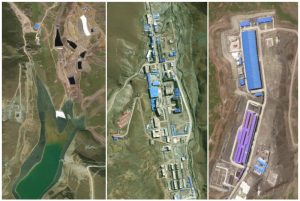
Photo: Pixabay
As the Chinese development machine marches on, more than 10,000 nomads have been forced from their land in Tibet’s Lhathog region.
For generations, a community of Tibetan nomads has lived around the Yulung Zangter Mountain in Kham Lhathog County of eastern Tibet. Now, in the name of development they are being forced from their lands with minimal compensation.
The eviction follows nearly ten years of mining in the area, after gold, copper and lead wasfound in 2008. “Last year, Chinese officials discovered additional reserves in the area of Lhato behind Yulung mountain,” one source said. “They confiscated most of that land from the nomads living there, and have put fences around the mining area.”
Nomads have appealed to the Chinese government for several years to stop the ongoing operations around the holy mountain, wreaking environmental havoc and polluting the country’s once pristine lakes and rivers. However, their appeals have remained unsuccessful.
This deteriorating situation is not uncommon. Massive land-grabs by the Chinese government have been going on for decades all over Tibet, particularly in the east, northeastern and central areas such as Sichuan, Qinghai and the Tibetan Autonomous Region.

Photo: TPI
It is thought that the newest area of land to be seized has affected more than 500 families, many of whom’s livelihood depended on the collection of caterpillar fungus, used in traditional Tibetan medicine. Chinese authorities have banned all access to the mountain, forcibly relocating families with insufficient compensation, sub-par housing, and a lack of government aid in finding jobs.
One source added that even if there was help to find work: “Every year, each household earned about 50,000 Yuan, [$7,890/£5,530] which was enough before the mining operations.But nomads are illiterate and have no experience in industrial work. There is a huge lack of jobs in the resettlement towns.”
It is said that the mining project in Lhathog County is the largest in the whole of China — the second largest in the world, a disquieting statistic that suggest many more Tibetan families will soon lose their homes, too.




 Print
Print Email
Email